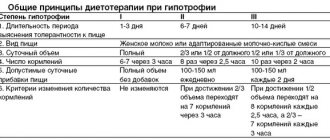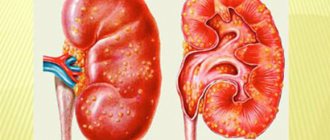Alalia in children symptoms:
- Mood swings
- Increased fatigue
- Memory impairment
- Decreased performance
- Lethargy
- Poor vocabulary
- Hyperactivity
- Fine motor impairment
- Inactivity
- Absent-mindedness
- Increased gesticulation
- Difficulties in speech recognition
- Lack of speech
- Playing meaningless strings of sounds and words
- Unclear sound reproduction
- Skipping letters in words
- Incorrect combination of two words into one
- Wrong word endings
- Increased sensitivity to sounds
- Pronounced facial expressions
What is alalia in children
Alalia in children is a speech function disorder in which the child cannot speak partially (with a poor vocabulary and problems in constructing phrases) or completely. But the disease is characterized by the fact that mental abilities are not impaired, the child understands and hears everything perfectly.
The main causes of the disease are considered to be complicated childbirth, diseases or brain injuries received at an early age. The disease can be cured with continued visits to a speech therapist and medication.
- Etiology
- Varieties
- Symptoms
- Diagnostics
- Treatment
- Prevention
Despite its rarity, the disease is more often diagnosed in boys than in girls. It can have varying degrees of severity - from the most serious, in which speech appears only after ten years, to a milder one, similar to speech underdevelopment. The most important thing is to distinguish this disorder from mental retardation.
Basically, children do not have developmental disorders (it can only be disrupted under the influence of public and peer oppression). If treatment is not timely at an early age, the child will later have problems with social adaptation and difficulties in finding his place in society.
Main types and symptoms of the disease
Symptoms of alalia in a child may vary. It all depends on the type of pathology and the degree of its progression. If you notice several alarming signs in your baby, be sure to consult a doctor. Doctors identify several types of alalia in children, each of which has its own characteristics, degree of development and mechanism of action. According to V. A. Kovshikov’s system, the disease is:
- Sensory;
- Motor;
- Mixed.
Let us consider in more detail the symptoms and features of each type of pathology. This information will definitely be useful to young parents.
Sensory alalia
https://www.youtube.com/watch?v=videoseries
If your baby has already reached the age of 3 years, but his speech is not sufficiently developed, you should immediately consult a doctor. Sensory alalia is a dangerous disease that affects the part of the cerebral cortex responsible for the correct analysis of speech. With such a pathology, the child cannot correctly compare a visual image and its sound designation. Simply put, the baby hears you perfectly, but cannot understand. This type of disease is additionally accompanied by the following symptoms:
- The child exhibits speech disinhibition. He talks constantly, but those around him do not understand what he is talking about;
- Intellectual underdevelopment develops;
- Poor speech perception by ear;
- Substitution of some letters in simple phrases;
- Pronunciation of two or three words as one;
- Excessive activity and impulsiveness, combined with isolation and depression;
- The child cannot mentally connect the image of an object and its name.
Motor alalia
The second type of pathology of the speech apparatus in children is motor alalia. With this pathology, the development of Broca's center and the pathways of this area are disrupted. This leads to the fact that the child’s speech develops very slowly, and it is difficult for the baby to fully master speech skills. Unlike sensory alalia, with motor alalia the baby understands well what adults are telling him.
The main signs and symptoms of this type of pathology are:
- Very late development of speech in a child. The baby can pronounce his first words only after reaching the age of 4 years;
- Incorrect grammatical construction of the sentence. In a conversation, the child uses words in the wrong case, gender, and number. The child confuses words that sound similar;
- The vocabulary is very limited;
- There is poor coordination of movements;
- The child is very inattentive, hyperactive or, conversely, inactive;
- The baby often refuses to talk and becomes aggressive and withdrawn.
Mixed alalia
The symptoms and treatment of mixed alalia are very serious. With this pathology, the entire sensorimotor area of the cerebral cortex is affected. Sick children not only do not understand what their parents say, but they also cannot speak. This form of pathology is the most difficult to treat, and even an integrated approach does not guarantee a positive prognosis.
The disease may appear gradually. If at 1.5-2 years the lack of coherent speech in a child does not cause strong concerns among parents, then the same defect at 3-4 years should alert you. Pathology has a direct effect on the cerebral cortex. For treatment to be as effective as possible, try to identify the disease at the earliest stage of development.
Causes of the disease
Since this disease can form in the womb or in the early years of life, the causes of its occurrence also differ in intrauterine and external influences.
The first group of factors includes:
- unsuccessful attempts by the expectant mother to get rid of the fetus;
- risk of miscarriage;
- uncontrolled use of medications by the expectant mother;
- complicated toxicosis in the mother, manifested by preeclampsia and eclampsia;
- insufficient oxygen supply to the fetus;
- unhealthy lifestyle that a woman led while pregnant;
- direct trauma to the abdomen or falling on it during pregnancy;
- various diseases of the woman that accompanied the period of bearing a child, including insufficiency, cardiac or pulmonary, arterial hypertension or hypotension, etc.;
- premature or complicated birth, obstetric intervention in the process.
Among the reasons influencing the formation of alalia in children under three years of age are the severe course of such ailments as:
- encephalitis. May appear from an insect bite or contact with a poisonous plant;
- meningitis caused by bacteria or fungi;
- various traumatic brain injuries;
- disturbances in the functioning of the central nervous system;
- bilateral pneumonia;
- ARVI;
- rickets;
- insufficient attention on the part of parents to teaching the child simple words or phrases;
- surgical intervention performed under anesthesia.
Doctors note that alalia in children does not arise from one factor, but from the simultaneous influence of several causes.
Reasons for the development of alalia
The main reason for the development of alalia is brain injury, which the child may receive during birth. Predisposing factors are asphyxia, the birth of a premature baby, prolonged or rapid labor, as well as the use of obstetric instruments to remove the fetus from the birth canal.
Sometimes brain damage occurs during perinatal development. Most often, the pathology is provoked by fetal hypoxia, the threat of miscarriage, abdominal trauma with damage to the fetus, the presence of somatic diseases in the pregnant woman - hypertension or hypotension, pulmonary, cardiac or respiratory failure. Intrauterine infection of the fetus significantly increases the risk of developing pathology.
Less commonly, alalia develops in the first years of a child’s life (up to 3 years). The reason for this may be a previous neuroinfectious disease and other unfavorable factors. As a rule, these are traumatic brain injury, meningitis, encephalitis, hypertension, etc. Alalia can also be caused by a history of acute respiratory viral infection, rickets or pneumonia with complications, or previous anesthesia. The situation can also be aggravated by an unfavorable social situation - lack of communication, lack of proper education, etc. In some cases, metabolic disorders and nutritional dystrophy can provoke pathology.
Varieties
Varieties: alalia in children.
In the medical field, there are many classifications of the disease, but nowadays speech therapists use the following division of speech disorder:
- sensory alalia in children is characterized by the fact that the child does not perceive what is said to him, he simply does not understand someone else’s speech, but at the same time he can hear, make sounds and pronounce simple words. His flow of speech is incoherent and unintelligible;
- motor alalia in children - in the case of progression of this type of illness, the child pronounces words quietly and indistinctly, but in most cases children cannot speak at all. Understanding of what other people say is not impaired, the child can even show understanding of the meaning of words using gestures;
- sensorimotor alalia in children is the most severe form of the disorder, combining the inability to understand speech and reproduce it.
Types of alalia
Alalia can be sensory (impaired perception), motor (impaired speech) and sensorimotor (impaired perception and speech).
With normally formed speech, it is characteristic that the brain or its individual parts reach a certain level of maturity. In accordance with the damage to certain speech centers of the brain (temporal, frontal parts), they speak of sensory and motor alalia.
The centers are responsible for the impressive form of speech (the ability to hear a statement, understand its meaning, content) and the expressive form (speaking skills). Forms of speech disorders differ in clinical presentation, manifestation, and symptoms.
With alalia, a child’s speech does not develop independently without the help of a speech therapist. The child can either be completely silent or “talk” in his own made-up language.
In medical practice, there are two forms of alalia in children:
- Motor alalia is accompanied by organic damage to the cortical part of the speech motor analyzer. With this diagnosis, the child has problems developing his own speech, but the child is able to understand the conversation of strangers. Damage to Broca's brain center leads to the fact that motor alalia can pass through several levels: the first level is characterized by a complete lack of understanding of spoken speech;
- at the second level, the child exhibits some speech features;
- The third level is characterized by speech with a large number of grammatical errors.
You can notice the appearance of symptoms of sensory alalia as early as two years of age, when parts of the child’s brain become more or less developed and the child tries to say his first words. Some of the most striking symptoms of sensory alalia can be identified:
- the appearance of problems with movement;
- lack of self-service skills;
- severe irritability;
- a noticeable lag in mental development compared to peers;
- communication with adults mainly takes place at the level of gestures;
- problems arise in performing speech operations.
The following types of alalia are distinguished:
- Motor alalia (expressive)
- Sensory alalia (impressive)
- Mixed type (sensorimotor alalia or motorosensory)
This classification of alalia was introduced by V.A. Kovshikov, a famous Russian speech therapist who was involved in an in-depth study of speech disorders in children.
A characteristic feature of alalia is underdeveloped speech, when the child pronounces only sounds or syllables, the first or last in a word.
Motor
Motor alalia occurs when there is a disruption in the connection of the brain's speech centers (Broca's and Wernick's) with the organs of the speech apparatus. Many children with this diagnosis do not master the language until they enter school.
Causes:
- Intrauterine organic brain damage
- Multiple damage to both hemispheres of the brain.
The mechanisms of motor alalia are not yet fully understood. Experts note that motor alalia is based on organic brain damage. However, some say that the basis of the disorder is a pathology of motor skills, while others say that it is a violation of mental processes.
Signs of violation:
- Agrammatism (incorrect construction of sentences, incorrect use of forms and cases of words)
- Word Search Disorders
- Violation of the syllabic structure of words
If a child has motor alalia, he may learn to speak, but never learn to write.
Important criteria for diagnosing alalia in children:
- Slow pace of language acquisition
- Pathological development of language
- Hearing safety
- Understanding spoken speech
It is important to note that motor alalia is often combined with severe neurological and psychopathological disorders. (Children suffering from autism and mental retardation often have speech pathologies).
Sensory
A characteristic sign of sensory alalia is echolalia, when a child meaninglessly repeats the speech of an adult addressed to him.
Sensory alalia is a speech underdevelopment characterized by impaired speech understanding. It is associated with damage to the left superior temporal gyrus of the brain, the so-called Wernicke's center.
With sensory alalia, the child’s phonemic hearing and, as a result, speech perception are impaired. The child does not understand the speech addressed to him and therefore does not speak.
Signs of violation:
- Obsessive and meaningless pronunciation of sounds and their combinations (perseveration).
- Unconscious repetition of someone else's words (echolalia).
- Combining several words into a single word (contamination).
Symptoms of alalia in children
Signs of the disease depend on the form of the disease. So, the symptoms of motor alalia are:
- violation of fine motor skills. The child cannot fasten buttons or tie shoelaces on his own;
- frequent mood changes;
- excessive activity may be replaced by lethargy and inactivity;
- absent-minded attention;
- low performance;
- increased fatigue;
- complete absence of speech or unclear reproduction of sounds;
- poor vocabulary, which leads to an incomplete understanding of what others say;
- pronounced facial expressions and gestures.
The following symptoms are characteristic of sensory alalia:
- increased sensitivity to sounds, since children are unable to understand anything else;
- a meaningless and incoherent set of sounds and words that the child reproduces;
- widespread use of facial expressions and gestures in communication;
- speech disorders in the form of missing letters in words, incorrect endings, or combining two words into one;
- slight memory impairment, children remember new words very difficultly or generally not at all;
- impulsiveness is replaced by isolation, and activity by passivity.
Against the background of the fact that the child cannot distinguish the speech that is spoken to him, he develops the ability to read words by lips.
Speech ontogeny
Scientific research has revealed that with sensory alalia, a specific disorder of the auditory analyzer is formed, based on weakness of excitation and inhibition and mild generalization (inconstancy of sound perception).
The main feature of hearing in sensory alalia is considered to be the rapid formation of the inhibition process due to increased functional exhaustion. In pathology, brain cells are underdeveloped. The cessation of their functionality is observed at the level of neuroblasts. Such a disorder can be congenital or acquired, formed in the pre-speech phase.
Dysfunction of the temporal region of the brain
Sensory alalia in children (signs and treatment are described in the article) suggests underdevelopment of brain structures. Morphological disturbance of the temple area causes insufficiency of analysis and synthesis of sound stimuli. For this reason, there is a lack of formation of a connection between sound and object.
In some cases, there is a clear localization of the pathological process in Wernicke's area, located in the left hemisphere. Sometimes a certain area of the lesion is absent, since in addition to Wernicke's area, the functionality of other areas is also impaired.
There are studies confirming that many children did not experience organic brain damage. The data were obtained during electroencephalography. Most modern scientists consider it incorrect to identify the localization of the zone that causes speech loss in an adult with a defect in children.
Bilateral brain damage
The formation of speech centers, according to neurophysiologists, takes place during ontogenesis. Scientists claim that sensory alalia may be a consequence of bilateral damage to brain structures.
This view is supported by the fact that a unilateral disorder, due to the plasticity of the child’s brain and its extensive compensatory capabilities, is not able to cause a permanent speech disorder. Alalia is caused by more extensive organic damage than aphasia.
Diagnostics
Since alalia occurs against the background of problems with the functioning of the brain, diagnostic methods will be aimed at studying the extent and assessment of damage in the brain. To do this, the little patient needs to go through:
- electroencephalography – which evaluates impulse transmission and brain activity;
- echoencephalography - the study of brain pathologies, which is carried out using ultrasound;
- X-ray of the skull;
- MRI of the head.
To exclude motor alalia and, accordingly, confirm sensory alalia, additional diagnostic methods are carried out, including:
- otoscopy, which is performed to examine the ear canal and eardrum;
- audiometry – with the help of which hearing acuity is assessed and the minimum sound intensity that a child can hear is determined.
In addition, it is necessary to consult a speech therapist who diagnoses and evaluates auditory-verbal memory and speech. You may also need consultations with pediatric doctors such as a neurologist, otolaryngologist and psychologist.
Diagnosis of alalia
Patients diagnosed with alalia need to be examined by the following specialists:
- Speech therapist - for perinatal history, identifying features of speech and psychomotor underdevelopment, as well as drawing up a model of lexical and grammatical structure, correction of phonemic processes and impressive speech.
- Neurologist - to identify the source of neuralgic dysfunctions and genetic abnormalities.
- Psychologist - to diagnose auditory-verbal memory, timing of psychomotor development, articulatory motor skills.
- Otolaryngologist - when drawing up a therapeutic treatment plan, it is necessary to exclude damage to the function of the hearing aid.
For additional diagnostics and identification of the degree of brain pathologies, the following is carried out:
- EEG;
- otoscopy;
- audiometry;
- MRI of the brain;
- X-ray of the skull;
- echo-encephalography.
Treatment of alalia in children
Therapy for this disorder is based on test results and the degree of manifestation of symptoms, and therefore will be developed individually for each small patient. The most favorable age for treating the disease is considered to be four years old; it is during this period that the child shows the greatest interest in the world around him.
Common treatments include:
- courses with a speech therapist, which are often combined with taking medications. Classes with a doctor will be effective for all forms of the disease. The treatment regimen is drawn up for each child separately, taking into account the general state of health, age and degree of disorder. The task of a speech therapist is to develop speech ability, teach how to correctly pronounce words and construct phrases, and also increase vocabulary. Taking medications is aimed at improving the nutrition of the brain (a complete supply of vitamins and nutrients);
- conducting therapeutic speech therapy facial massages. This treatment helps to tone and relax the facial muscles, which can reduce the appearance of some symptoms.
- physical therapy, the purpose of which is to influence certain areas of the brain with electrical impulses. This method of treatment does not harm health and is completely painless, so it can be performed on children under the age of one year.
If timely and, most importantly, well-chosen treatment is carried out, the child will get rid of all the symptoms of the disease or learn to control them. But the main thing is that he will be able to study at a comprehensive school and adapt to society.
Parental support plays an important role in therapy, since it is important for the child to know that his successes in treatment do not go unnoticed by those closest to him; this will provide an additional incentive for a speedy recovery, which further facilitates treatment.
Symptoms of motor alalia
With motor alalia, characteristic non-speech (neurological, psychological) and speech manifestations occur. Neurological symptoms in motor alalia are represented primarily by movement disorders: awkwardness, lack of coordination of movements, poor development of motor skills of the fingers. Children have difficulty mastering self-care skills (buttoning buttons, tying shoes, etc.) and performing fine motor operations (folding mosaics, puzzles, etc.).
Considering the psychological characteristics of children with motor alalia, one cannot help but note impairments in memory (especially auditory-verbal), attention, perception, and emotional-volitional sphere. Based on their behavioral characteristics, children with motor alalia can be hyperactive, disinhibited, or sedentary and inhibited. Most children with motor alalia have reduced performance, high fatigue, and speech negativism. Intellectual development in alalik children suffers secondarily due to speech insufficiency. As speech develops, intellectual impairments are gradually compensated.
With motor alalia, there is a pronounced dissociation between the state of impressive and expressive speech, i.e., speech understanding remains relatively intact, but the child’s own speech develops with gross deviations or does not develop at all. All stages of the development of speech skills (humbling, babbling, babbling monologue, words, phrases, contextual speech) occur with a delay, and the speech reactions themselves are significantly reduced.
Despite the fact that a child with afferent motor alalia is potentially able to perform any articulatory movements (unlike dysarthria), sound pronunciation is grossly impaired. In this case, persistent substitutions and confusions of articulatory disputable phonemes arise, which leads to the impossibility of reproducing or repeating the sound image of a word.
With efferent motor alalia, the leading speech defect is the inability to perform a series of successive articulatory movements, which is accompanied by a gross distortion of the syllabic structure of the word. The lack of formation of a dynamic speech stereotype can lead to the appearance of stuttering against the background of motor alalia.
Vocabulary in motor alalia significantly lags behind the age norm. New words are difficult to learn; the active vocabulary contains mainly everyday terms. A small vocabulary causes an inaccurate understanding of the meanings of words, their inappropriate use in speech, and substitutions based on semantic and sound similarity. A characteristic feature of motor alalia is the absolute predominance of nouns in the nominative case in the vocabulary, a sharp limitation of other parts of speech, difficulties in the formation and differentiation of grammatical forms.
Phrasal speech with motor alalia is represented by simple short sentences (one- or two-part). As a consequence, with alalia there is a gross violation of the formation of coherent speech. Children cannot consistently present events, highlight the main and secondary, determine temporary connections, cause and effect, or convey the meaning of phenomena and events.
In severe forms of motor alalia, the child has only onomatopoeia and individual babbling words, which are accompanied by active facial expressions and gestures.
Prevention
Prevention of alalia mainly consists of:
- for a favorable pregnancy, it is best if during this period of life the woman stays at a resort or sanatorium;
- refusal of bad habits by the expectant mother even at the stage of pregnancy planning;
- timely treatment of infectious diseases, the symptoms or complications of which may harm the fetus;
- protection from the use of medicinal substances without apparent reasons or doctor’s orders;
- enriching the diet with vitamins and nutrients that should reach the fetus;
- regular visits to the obstetrician-gynecologist.












